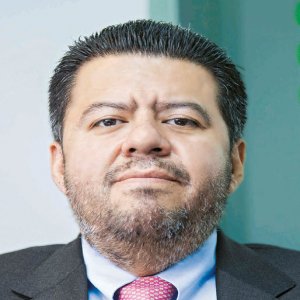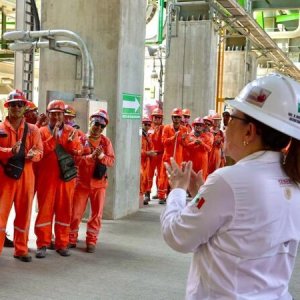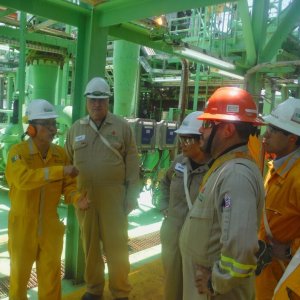Slower Private Investment Creates Impasse

Slower Private Investment Creates Impasse

STORY INLINE POST
Q: What makes PPG Comex’s main products and services essential to the oil and gas sector?
MM: PPG Comex has two main divisions: B2C and B2B. B2B is the professional solutions division, which addresses large consumers with specialized needs in six different sectors. This division stands on three main pillars: trained experts, quality products and specialized infrastructure. Our labor force is highly trained so they develop soft skills for the commercial side as well as product and industry knowledge. One part of the training is internal and performed by PPG trainers, the other part is performed by industry experts from elite educational institutions such as ITESM. We have seven manufacturing facilities where we manufacture most of the products we offer and four specialized centers where we showcase products and invite clients or potential clients to compare PPG Comex’s products against those of our competitors so they can be confident with PPG Comex as their main solutions’ provider.
2017 will be a challenging year because on one side PEMEX has announced the discovery of new fields, which will provide new business ventures for manufacturers and service providers like us. On the other hand, the US$5 billion budget cut for PEMEX for the 2016-2017 period translates to fewer opportunities for PPG Comex to acquire more contracts.
GP: To tend to the needs of the oil and gas sector we have our Protective and Marine Coatings Division (PMC). What differentiates this division from all others is its focus on protecting and preserving the clients’ assets. This division is the most specialized within PPG-Comex because it provides high-temperature fire-retardant roofing and flooring solutions for the industry. The Technological and Industrial Innovation Center (CITI) is a research facility specifically designed to test products in different simulated weather scenarios.
Q: How has the liberalization of the market impacted PPG Comex’s PMC division?
GP: It is taking longer than expected for private investment to enter the market, which has delayed the construction of new infrastructure and left manufacturers and suppliers at an impasse. We are trying to diversify into more dynamic sectors while the oil and gas industry recovers but at the same time we want to secure our position in the market so we do not lose momentum.
MM: History has taught us this is the best approach when facing the slowdown of a specific industry. There are new opportunities to achieve our goals. In the industrial sector we are growing more than 8 percent annually because our customers value our unique proposal and view of the industry. PPG Comex seeks to establish long-term relationships instead of just selling a product. Sometimes we get involved in a project as much as eight or 10 years before it actually starts, so we can work with the design, blueprints and specifications to develop the most tailored solution for our customers. We reduce financial risks by subcontracting companies to deliver a whole solution for specific projects, depending on our clients’ needs and the specifications of the project.
Q: How can your products and services allow clients to boost their competitiveness in the oil and gas sector?
MM: When we commit to a client we offer a long-term relationship. We strive to create durable solutions that will solve our clients’ needs in the long run. To do so, we perform a deep analysis of the solution system. We look forward to showing clients we are not just looking to make a sale for the short-term but that we get to the root of the problem and solve it for the next 30 years.
GP: Being part of PPG allows us to have numerous international partners that give us early notice on new regional developments for which they then start developing solutions. We then contact the regional managers of such projects and start working where needed.
























